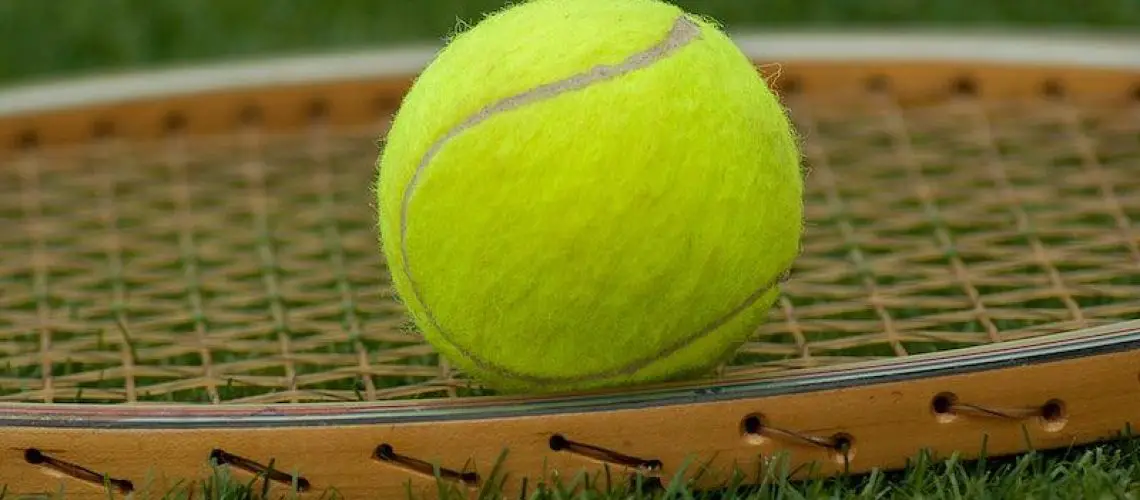We may earn money or products from the companies mentioned in this post.
Introduction

When it comes to traveling as a tennis player, one of the most essential items to bring along is your trusty tennis racket Whether you’re jetting off to a tournament or simply enjoying a vacation where you plan to hit the courts, having your own racket can make all the difference in maintaining your performance and consistency on the court
The Common Concerns and Challenges
However, flying with your tennis equipment can present some unique challenges that every tennis player should be aware of From size and weight restrictions to potential damage during transit, it’s important to understand how to navigate these obstacles effectively
Size and Weight Restrictions
One of the primary concerns when traveling with a tennis racket is adhering to airline size and weight restrictions Most airlines have specific guidelines for sports equipment, including rackets, which may require additional fees or special handling
To avoid any surprises at the airport, it’s crucial to familiarize yourself with your airline’s policies regarding sports equipment Some airlines may allow you to carry your racket as part of your cabin baggage, while others may require you to check it in as oversized luggage
Potential Damage During Transit
Another significant worry for tennis players is the potential damage their rackets may sustain during transit Rackets are delicate instruments that require proper care and protection The last thing any player wants is to arrive at their destination only to find their beloved racket cracked or broken
To minimize the risk of damage, investing in a high-quality racket case or bag is crucial These specially designed cases provide padding and support, ensuring that your racket remains safe throughout its journey Additionally, consider using bubble wrap or extra cushioning inside the case for added protection
In conclusion,
Recap of the importance of traveling with a tennis racket
Acknowledgment of the common concerns and challenges faced by tennis players when flying with their equipment
Packing Your Tennis Racket for Air Travel

Selecting the Right Case or Bag for Your Tennis Racket
When it comes to packing your tennis racket for air travel, selecting the right case or bag is crucial You want to ensure that your racket arrives at your destination safe and sound There are two main options to consider: hardshell cases and soft bags
Hardshell Cases:
These cases offer excellent protection for your racket They are sturdy and can withstand rough handling during transit Hardshell cases often come with foam padding inside, which helps absorb shocks and prevent any damage to your racket
Soft Bags:
Soft bags, on the other hand, provide more flexibility in terms of storage space They usually have multiple compartments where you can store additional tennis gear such as balls, grips, or even clothing However, they may not provide the same level of protection as hardshell cases since they are less rigid
No matter which option you choose, make sure that there is proper padding and protection inside the case or bag This will further safeguard your racket from any potential bumps or jostling during transit
Meeting Airline Size and Weight Requirements
Before heading to the airport with your tennis racket in tow, it’s important to check the specific airline guidelines regarding sports equipment dimensions and weight limits Different airlines may have different rules when it comes to carrying sporting equipment like tennis rackets
Checking Specific Airline Guidelines:
Visit the airline’s website or contact their customer service directly to find out about their policies regarding sports equipment This way, you’ll know exactly what size restrictions and weight limits apply before packing your racket
Tips on Reducing Size and Weight:
If your racket exceeds the airline’s size or weight limits, there are a few tricks you can try For instance, consider removing the strings from your racket to reduce its overall size Additionally, you can pack some lightweight clothing items around the racket to help distribute the weight more evenly
By following these guidelines and taking necessary precautions, you can ensure that your tennis racket arrives at your destination ready for action, allowing you to focus on enjoying your game rather than worrying about potential damage during air travel
Going Through Airport Security with Your Tennis Racket

Understanding TSA rules for carrying tennis rackets in carry-on luggage versus checked baggage
When it comes to traveling with your beloved tennis racket, it’s essential to understand the Transportation Security Administration (TSA) rules regarding sports equipment The TSA generally allows sports equipment as carry-on items, but there are some considerations specific to tennis rackets that you should keep in mind
-
TSA’s general policy on sports equipment as carry-on items:
The TSA permits most sports equipment, including tennis rackets, in both carry-on and checked baggage However, certain restrictions apply to prevent potential safety hazards It’s always a good idea to check the latest guidelines on the TSA website before your trip -
Airline-specific regulations that may affect your ability to bring your racket onboard:
While the TSA sets general guidelines for carrying sports equipment, individual airlines may have additional restrictions or requirements Some airlines may consider a tennis racket as part of your carry-on allowance, so it’s wise to review their policies beforehand
Preparing for security screening procedures
As you prepare for airport security screening procedures with your tennis racket, there are a couple of things you can do to make the process smoother and more efficient
-
Ensuring easy access to your tennis racket in its case or bag while packing other items:
When packing your belongings, place your racket in a designated compartment within its case or bag This way, you can easily remove it when required during security checks without disrupting the organization of other items in your luggage -
Handling potential questions from airport security personnel about your gear:
It’s not uncommon for airport security personnel to ask questions about sports equipment If questioned about your tennis racket, confidently explain its purpose and ensure them that it is safe and compliant with TSA regulations Being prepared and knowledgeable will help alleviate any concerns they may have
By familiarizing yourself with the TSA rules and preparing for security screening procedures, you can navigate airport security checkpoints smoothly with your tennis racket in tow Remember to always check airline-specific regulations and be ready to answer any inquiries from airport security personnel confidently
Final Tips for a Hassle-Free Journey with Your Tennis Racket

When it comes to traveling with your tennis racket, protecting it during the journey is crucial After all, you don’t want your beloved racket to be damaged before you even step foot on the court Here are some tips to ensure a safe and hassle-free trip:
Protecting your tennis racket en route
If you’re checking in your tennis racket as baggage, it’s a good idea to make use of “fragile” stickers or tags This simple action can alert airport staff to handle your luggage with care, reducing the risk of any mishaps along the way
Additionally, considering travel insurance that covers sporting equipment damage or loss can provide extra peace of mind While we hope nothing happens to your precious racket, having insurance can offer financial protection if the unexpected occurs
Maximizing convenience while transporting multiple rackets or additional gear
For those who need to bring along multiple rackets or additional gear like balls and strings, here are some handy tips:
- Bundling smaller accessories within larger luggage pieces can help save space and keep everything organized For example, tuck balls and strings inside a larger bag or suitcase that you’re already carrying
- If you frequently travel with tennis equipment, exploring specialized luggage options designed specifically for tennis players could be a game-changer These bags often come equipped with compartments and padding to protect your rackets and other gear effectively
By following these final tips for traveling with your tennis racket, you’ll be well-prepared for any journey that comes your way Whether you’re heading to a local tournament or an international match, rest assured knowing that your equipment is safeguarded and ready for action
Useful Links

10 Surprising Things You’re Allowed to Take on an Airplane
Tennis racquet sticking out of carry-on backpack?
Can You Carry Tennis Racquets on a Plane? (Easy Guide)
Tips for Traveling with Tennis Racquets
can you bring a tennis racket on a plane? – Sportsalizer
Top Tips For Tennis Travelers | Packing, Carry On Bags, …
Can You Bring Tennis Rackets On A Plane? Complete …
tennis rackets in hand luggage – Air Travel Forum
Traveling with Tennis Racquets
Can I take a tennis racquet to the cabin?
Can you bring tennis racket as a carry-on item?
Hi Chrysti! You can bring your racket as a personal item …
Does Tennis Racquet Go Through Tsa?
How to pack a tennis racket?
Can You Bring A Tennis Equipment On An Airplane?
Can You Bring A Tennis Racket On The Plane? – TravelTad
Is Tennis Racket Allowed in Hand Luggage – Sport Tasty






